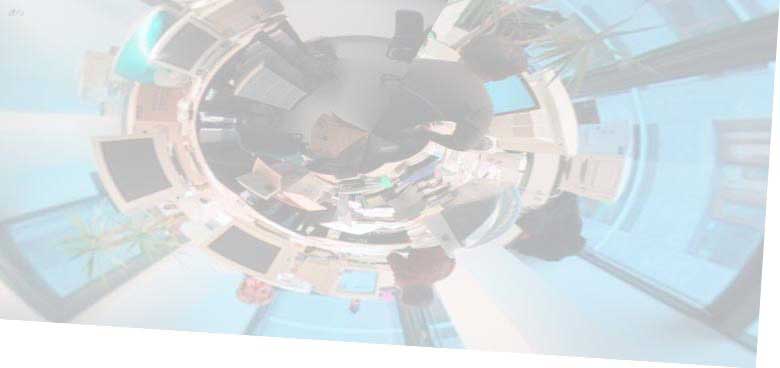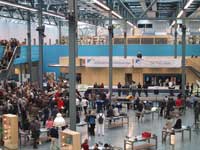
User involvement in Small and Medium Enterprises (SME's)
Understanding user needs has become a major issue in new product development (NPD). Many large international companies have recognized this new direction or attitude for innovation and have taken the lead in developing and applying it in their processes. Examples are Microsoft‚s use of ethnography [1], and Philips‚ „Sense and Simplicity‰ campaign. Next to these examples, many case studies in literature and handbooks about user-centered design suggest that the use of emerging methods to generate user information is common practice. However, these authors address practices in academia or in leading companies and not necessarily the practice of the majority of product development companies. The mentioned companies are in a privileged position, having the possibilities to spend time, manpower and budget on extensive user studies and explore co-creation design
projects. Involving the user in large international companies resembles the user research conducted in academia: reliability, unambiguous results, proofing etc. Sleeswijk Visser [2] gives an overview of the main differences between user research in an academic and design practice environment based on existing literature.
Even though everyone conducting user studies claims to never have enough time to conduct a study properly, in the case of SME‚s this is taken to an extreme level. Here, design projects span between a few days up to a few months; in comparison, the larger international companies can conduct projects that take several years. The
differences are not just the available time, but also the goals for involving the user. In international companies the user is often involved for validation purposes before a product comes on the market. SME‚s do not have the means for these large-scale studies and rather involve the user for small scale (usability) testing. But SME‚s have
many opportunities. Because of the short run time of projects, SME‚s can easily observe new opportunities in the market and react upon them. In the Netherlands the Ministry of Economic Affairs mainly focuses on the SME‚s for innovation. They recognize SME‚s as the main source of innovation.
Until Wakeford [3], SME‚s have been the forgotten child within academic research regarding participatory design. The need for user involvement within SME‚s has been recognized, but in which aspects does this differ from user involvement already taking place within larger companies? To be able to focus on this type user
involvement methods for SME‚s, we investigate the current status of user involvement in SME‚s. Some of the aspects that my research deals with are: Are specific methods used in small design projects? Is there a need for new methods? Or should existing methods be altered to fit their specific needs? What are these needs?
[1] Sanders, E.B.N., 2004, Ethnography and the empowerment of everyday people, White paper for Microsoft Corporation 2004.
[2] Sleeswijk Visser, F.,2009, Bringing the everyday life of people into design. Doctoral thesis, Delft University of Technology, p33. (available online via http://www.contextmapping.com)
[5] Wakeford, N., 2004, Innovation through people-centred design-lessons from the USA. DTI global watch mission report.
Understanding user needs has become a major issue in new product development (NPD). Many large international companies have recognized this new direction or attitude for innovation and have taken the lead in developing and applying it in their processes. Examples are Microsoft‚s use of ethnography [1], and Philips‚ „Sense and Simplicity‰ campaign. Next to these examples, many case studies in literature and handbooks about user-centered design suggest that the use of emerging methods to generate user information is common practice. However, these authors address practices in academia or in leading companies and not necessarily the practice of the majority of product development companies. The mentioned companies are in a privileged position, having the possibilities to spend time, manpower and budget on extensive user studies and explore co-creation design
projects. Involving the user in large international companies resembles the user research conducted in academia: reliability, unambiguous results, proofing etc. Sleeswijk Visser [2] gives an overview of the main differences between user research in an academic and design practice environment based on existing literature.
Even though everyone conducting user studies claims to never have enough time to conduct a study properly, in the case of SME‚s this is taken to an extreme level. Here, design projects span between a few days up to a few months; in comparison, the larger international companies can conduct projects that take several years. The
differences are not just the available time, but also the goals for involving the user. In international companies the user is often involved for validation purposes before a product comes on the market. SME‚s do not have the means for these large-scale studies and rather involve the user for small scale (usability) testing. But SME‚s have
many opportunities. Because of the short run time of projects, SME‚s can easily observe new opportunities in the market and react upon them. In the Netherlands the Ministry of Economic Affairs mainly focuses on the SME‚s for innovation. They recognize SME‚s as the main source of innovation.
Until Wakeford [3], SME‚s have been the forgotten child within academic research regarding participatory design. The need for user involvement within SME‚s has been recognized, but in which aspects does this differ from user involvement already taking place within larger companies? To be able to focus on this type user
involvement methods for SME‚s, we investigate the current status of user involvement in SME‚s. Some of the aspects that my research deals with are: Are specific methods used in small design projects? Is there a need for new methods? Or should existing methods be altered to fit their specific needs? What are these needs?
[1] Sanders, E.B.N., 2004, Ethnography and the empowerment of everyday people, White paper for Microsoft Corporation 2004.
[2] Sleeswijk Visser, F.,2009, Bringing the everyday life of people into design. Doctoral thesis, Delft University of Technology, p33. (available online via http://www.contextmapping.com)
[5] Wakeford, N., 2004, Innovation through people-centred design-lessons from the USA. DTI global watch mission report.
contact
ir. Christine De LilleLandbergstraat 15
2628CE Delft
room: 10-2A-19
phone: 0619-844724
email: c.s.h.delille@tudelft.nl
Links to related projects:
ID-Studiolabour research
contextmapping
research CM
Links to related topics:
ideoadaptive path
edean
Keywords in google
user researchuser centred design
contextmapping






